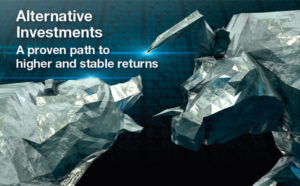Special to the Financial Independence Hub
When I review the portfolio of new clients as part of their financial plan, they almost always have at least one of the following concerns on their mind. They ask how long can stocks continue to climb, given it has been an eight-year bull market or how can their portfolio earn any income with interest rates being so low. More often than not they ask both.
These are real concerns I hear from real people I meet. More and more I am finding that traditional investment solutions are not enough on their own.
Consider how our investment world has changed since 1990. In 1990, an investor could purchase a Government of Canada bond yielding 9.9%, invest in equity markets with a 15X Price Earnings Valuation and lived on average to age 77. In 2017, that same Government of Canada bond yields 1.5%, the Price Earnings Valuation has increased to 22X and average life span is 82 years.
Coping with longer lives, low interest rates and inflation
So the average Canadian investor is now facing a longer life, with fully valued or overvalued equity markets and a fixed-income yield that barely keeps up with inflation even before taxes. Traditional investments can offer little in the way of a solution, especially without increasing the risk profile of my client.
This is where alternative investments can add real value to a portfolio.
Many alternative investment strategies provide yields well in excess of the 1.5% bond yield mentioned above, often averaging annual returns in the 6 to 8% range. The income produced from this part of the portfolio can be used to supplement the low current yields on fixed income.
In addition to return enhancements, alternative investments have a very low correlation to traditional investment markets. What this means is, their performance is not meaningfully impacted by changes in the equity markets. This not only provides diversification, but also portfolio preservation in times of negative volatility.
What are alternative investments? They are any investment that is not a public stock, bond or cash security. Some examples would be private debt, infrastructure, real estate and private equity. They invest in private income oriented investments they can generate stable, high levels of income or by using sophisticated equity hedging strategies to reduce volatility.
 Alternatives can have barriers to entry
Alternatives can have barriers to entry
As with all great things, many investors will wonder, “What’s the catch?” Though there is no “catch” with alternative investments, there are barriers to entry for the average investor. The two main barriers to investing in alternative investments are:
- High investment minimums because the investor is not an Accredited Investor (has $1 million in investable assets or $300,000 of income)
- Many financial firms do not have the specialized skill set to analyze these investments and thus do not offer them
Though these barriers exist, they can be surmounted by engaging with an appropriate investment counselling firm. The advice provided by an investment counselling firm will allow an investor to access the alternative investment even if not accredited. The firm chosen should have a process to identify alternative investment solutions with proven money managers who have strong track records and a disciplined investment process. Thus, they can engage in the relationship with the alternative investment manager on your behalf.
During the past 30 years, pension plans have been achieving some of the highest returns. It is no coincidence that during the same time period their allocation to alternative investments has also increased substantially to enhance returns and decrease volatility risk.
Institutions have tripled allocation to alternatives
According the annual asset mix report produced by the Pension Investment Association of Canada, which reports on the $1.6 trillion invested by Canadian pensions, the allocation to alternative investments has increased from 10% in 1990 to 33% in 2015. This is an increase of over 200%!
These funds hold the financial future of thousands if not millions of Canadians in their hands. The “smart money” is moving out of the traditional investment world into the alternative one. Now you have the opportunity to do the same.
The world was a very different place in 1990. Brian Mulroney was Prime Minister of Canada, Microsoft released version 3.0 of Windows and The Simpsons first aired on TV. It only makes sense that the investing world would have changed since that time too. If your portfolio isn’t positioned to take advantage of the new investing reality, then my only question is what are you waiting for?
 Matthew Ardrey, CFP, R.F.P., CIM, FMA is a VP, Wealth Advisor with TriDelta Financial. He has been providing unbiased advice to his clients on their financial planning and investment management needs since 2000. He can be reached at matt@tridelta.ca.
Matthew Ardrey, CFP, R.F.P., CIM, FMA is a VP, Wealth Advisor with TriDelta Financial. He has been providing unbiased advice to his clients on their financial planning and investment management needs since 2000. He can be reached at matt@tridelta.ca.








